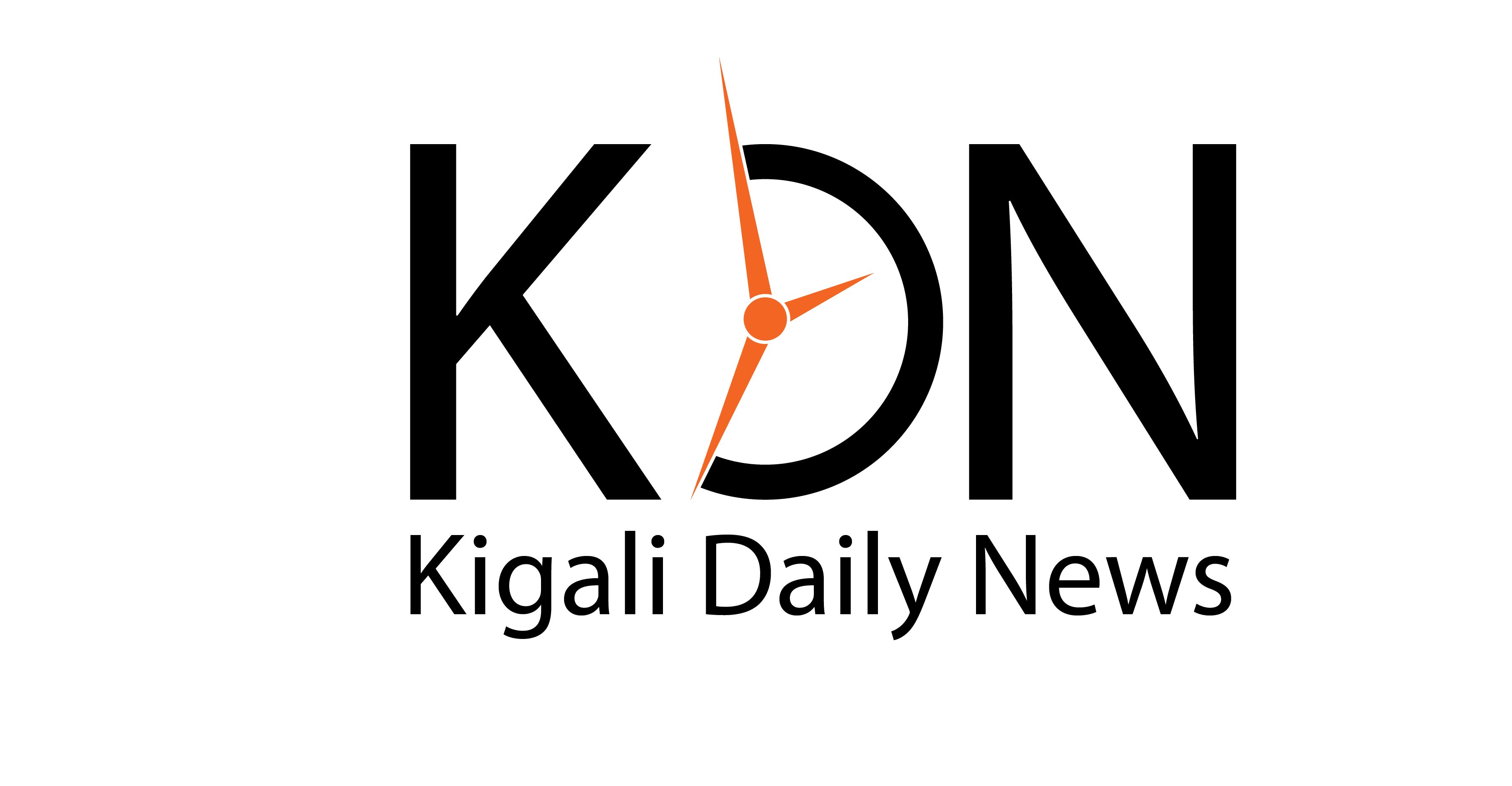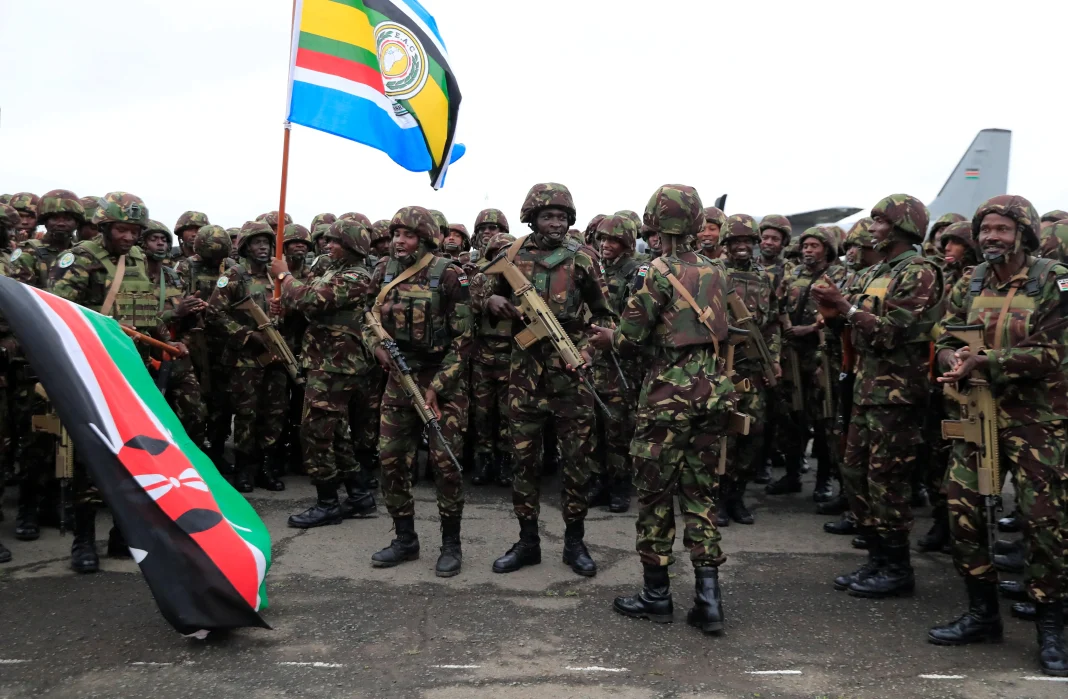In 2023, military expenditures across the East African Community (EAC) experienced notable shifts, with several member states significantly altering their defense budgets. The Democratic Republic of Congo (DRC) and South Sudan led with substantial increases, while Kenya and Tanzania reported reductions.
Key Insights from 2023 Defense Spending
Democratic Republic of Congo (DRC): The DRC’s military spending more than doubled, reaching $794 million in 2023—a 105% increase from the previous year. This surge aligns with escalating tensions with neighboring Rwanda and intensified conflicts with non-state armed groups.
South Sudan: Following a 108% increase in 2022, South Sudan’s defense expenditure rose by another 78% in 2023, totaling $1.1 billion. This uptick reflects ongoing internal instability and security challenges, including those spilling over from the civil war in neighboring Sudan.
Kenya: Traditionally a leading military spender in the region, Kenya’s defense budget declined from $1.19 billion in 2021 to $999.5 million in 2023. This reduction may indicate a reallocation of resources towards other national priorities.
Tanzania: Tanzania’s defense spending decreased by 8.7% in 2023, suggesting a strategic shift or reallocation of resources.
Uganda: Uganda’s military expenditure fluctuated, recording $1.07 billion in 2021 and settling at $976.7 million in 2023.
Rwanda: Known for its disciplined and professional army, Rwanda’s defense budget saw a modest increase from $167.8 million in 2021 to $178.6 million in 2023.
Military Spending as a Percentage of GDP
| Country | 2021 | 2022 | 2023 |
|---|---|---|---|
| Burundi | 2.04% | 2.60% | 3.66% |
| DR Congo | 0.54% | 0.58% | 1.16% |
| Kenya | 1.08% | 1.01% | 0.91% |
| Rwanda | 1.51% | 1.33% | 1.27% |
| South Sudan | 2.63% | 4.15% | 6.26% |
| Tanzania | 1.12% | 1.14% | 1.15% |
| Uganda | 2.64% | 2.04% | 1.98% |
South Sudan now leads the region in military spending as a share of GDP, with its budget rising from 2.63% in 2021 to a staggering 6.26% in 2023.
Uganda’s defense spending has slightly declined from 2.64% in 2021 to 1.98% in 2023.
Rwanda, despite its modest budget compared to Kenya and Uganda, maintains a relatively high military spending ratio—1.51% of GDP in 2021, decreasing slightly to 1.27% in 2023. Tanzania’s military budget has remained stable at just over 1.1% of GDP.
Military Spending as a Percentage of Government Budget
| Country | 2021 | 2022 | 2023 |
|---|---|---|---|
| Burundi | 6.72% | 6.70% | 10.23% |
| DR Congo | 3.43% | 3.25% | 6.96% |
| Kenya | 4.49% | 4.43% | 4.11% |
| Rwanda | 4.79% | 4.49% | 4.55% |
| Somalia | 24.14% | 15.79% | 19.79% |
| South Sudan | 3.43% | 5.80% | 8.64% |
| Tanzania | 6.10% | 5.93% | 6.03% |
| Uganda | 11.54% | 9.66% | 9.58% |
Uganda and Burundi stand out, with Uganda allocating 9.58% of its total government budget to defense in 2023, down from 11.54% in 2021. Rwanda, despite having a lower absolute defense budget, also maintains a relatively high share at 4.55%.
South Sudan, due to its volatile situation, has made a radical shift, raising its defense spending from 3.43% of total government expenditure in 2021 to 8.64% in 2023. This reflects the government’s prioritization of military stability over social development programs.
Security Concerns Driving Military Investments
Several key factors explain the rapid militarization of the EAC region:
- Regional Conflicts and Insurgencies
The long-running instability in the Democratic Republic of Congo (DRC) has had a spillover effect on neighboring Rwanda and Uganda. The serious threat posed by militias such as the FDLR (Forces Démocratiques de Libération du Rwanda) has forced Rwanda to remain vigilant. The recent conflict in Goma, where the DRC and a large coalition launched an offensive against M23, underscored the growing risk of regional escalation. - Kenya and Somalia’s Strategic Military Posture
Kenya continues to play a leading role in the fight against Al-Shabaab militants in Somalia, which justifies its sustained high defense spending. The Kenyan military remains a key contributor to the African Union Transition Mission in Somalia (ATMIS), engaging in counterterrorism operations along its border. - South Sudan’s Fragile Peace
South Sudan’s massive increase in military expenditure is largely due to internal security concerns. The country has been struggling with rebel factions, intercommunal conflicts, and political instability since gaining independence in 2011. The government has prioritized military spending to maintain control and enforce peace agreements.
The Risk of a Regional Arms Race
While militarization is often justified in terms of national security, the increasing defense budgets of EAC nations raise concerns about an arms race.
The rapid accumulation of military assets in South Sudan, Uganda, and the DRC could lead to an escalation of conflicts rather than a deterrence of war.
Furthermore, with some countries prioritizing military spending over essential sectors like healthcare and education, the economic impact of this trend must be scrutinized. The heavy reliance on military solutions rather than diplomatic engagements could further destabilize the region.
In 2010, military spending among East African Community (EAC) nations varied significantly, with South Sudan, Kenya, and Uganda leading in defense expenditures.
South Sudan, despite being a newly independent state, allocated $650.9 million, the highest in the region. Kenya followed closely with $622 million, maintaining its historical trend of substantial defense budgets due to its involvement in regional security and counterterrorism efforts.
Uganda, another significant military spender, dedicated $608.7 million to its defense, reflecting its ongoing security operations, including engagements in Somalia under the African Union peacekeeping mission. Meanwhile, the Democratic Republic of Congo (DRC) spent $183.7 million, while Rwanda, with a more modest military budget, allocated $74.5 million.
Comparing these figures to the latest data from 2024, the region has witnessed a sharp increase in defense spending, reflecting evolving security dynamics.
South Sudan’s defense budget has grown significantly, surpassing $1 billion, fueled by ongoing internal conflicts and efforts to stabilize its fragile political landscape.
Kenya’s military expenditure has remained high, though slightly declining in recent years, as the country continues counterterrorism operations against Al-Shabaab. Uganda’s spending remains substantial but has fluctuated, influenced by regional security concerns, particularly regarding the situation in the DRC.
One of the most notable changes is Rwanda’s steady increase in military investment. While its defense budget was just $74.5 million in 2010, it has now risen to nearly $180 million, reflecting its focus on modernization and preparedness.

The varied military expenditure trends within the EAC in 2023 underscore the region’s diverse security challenges and strategic priorities. As member states navigate these complexities, their defense spending decisions will continue to shape the region’s stability and development trajectory.



